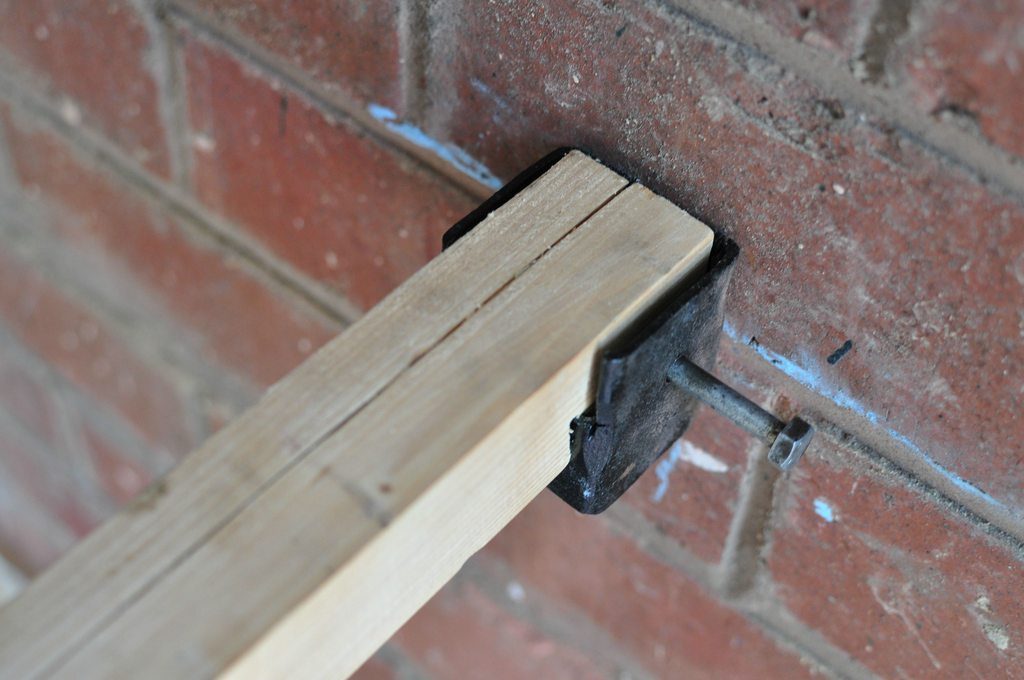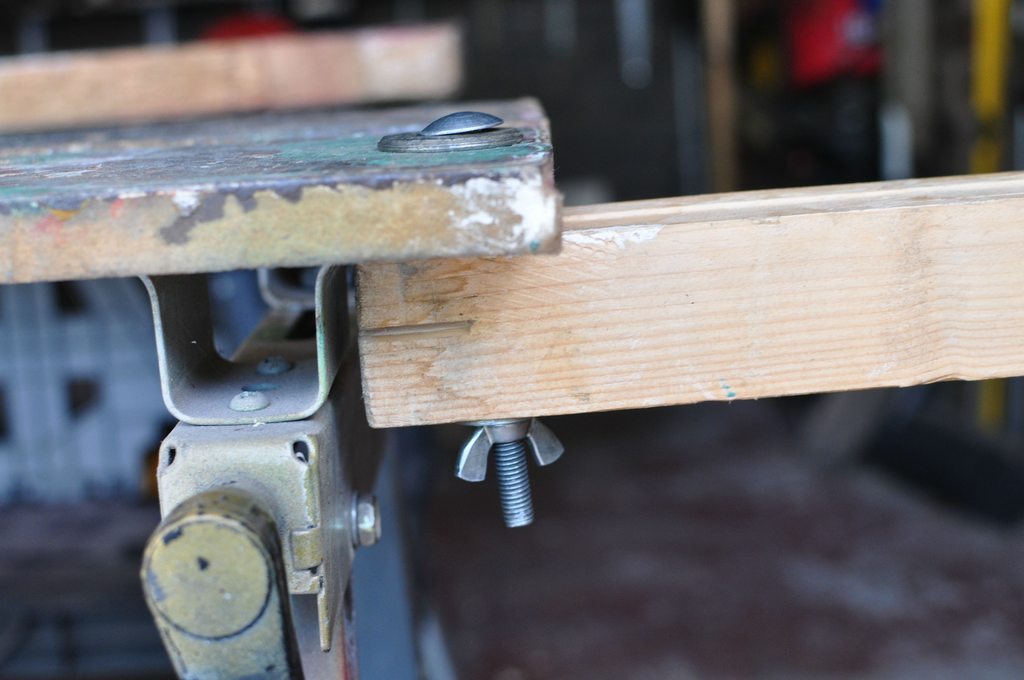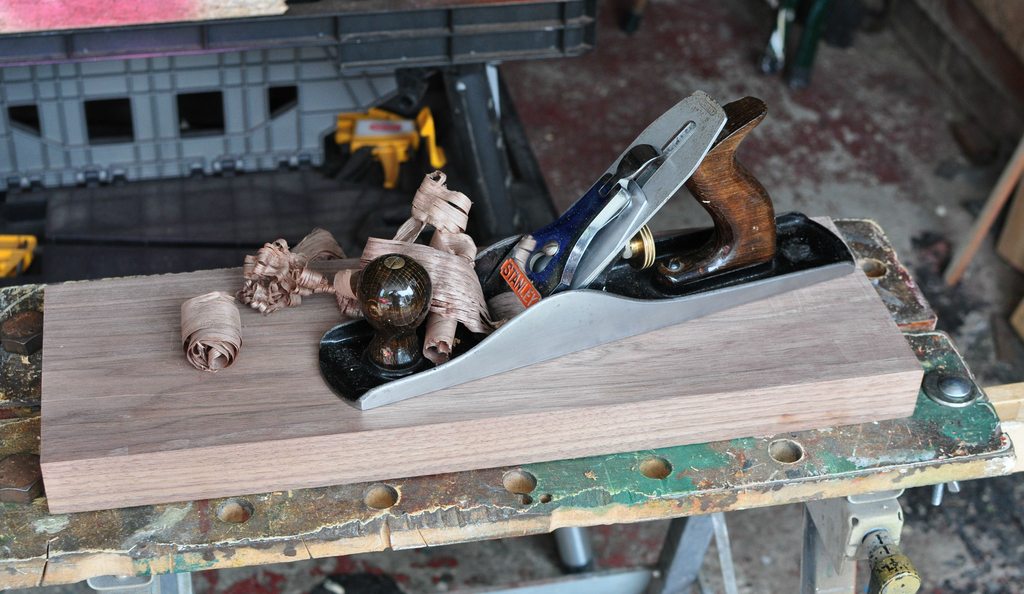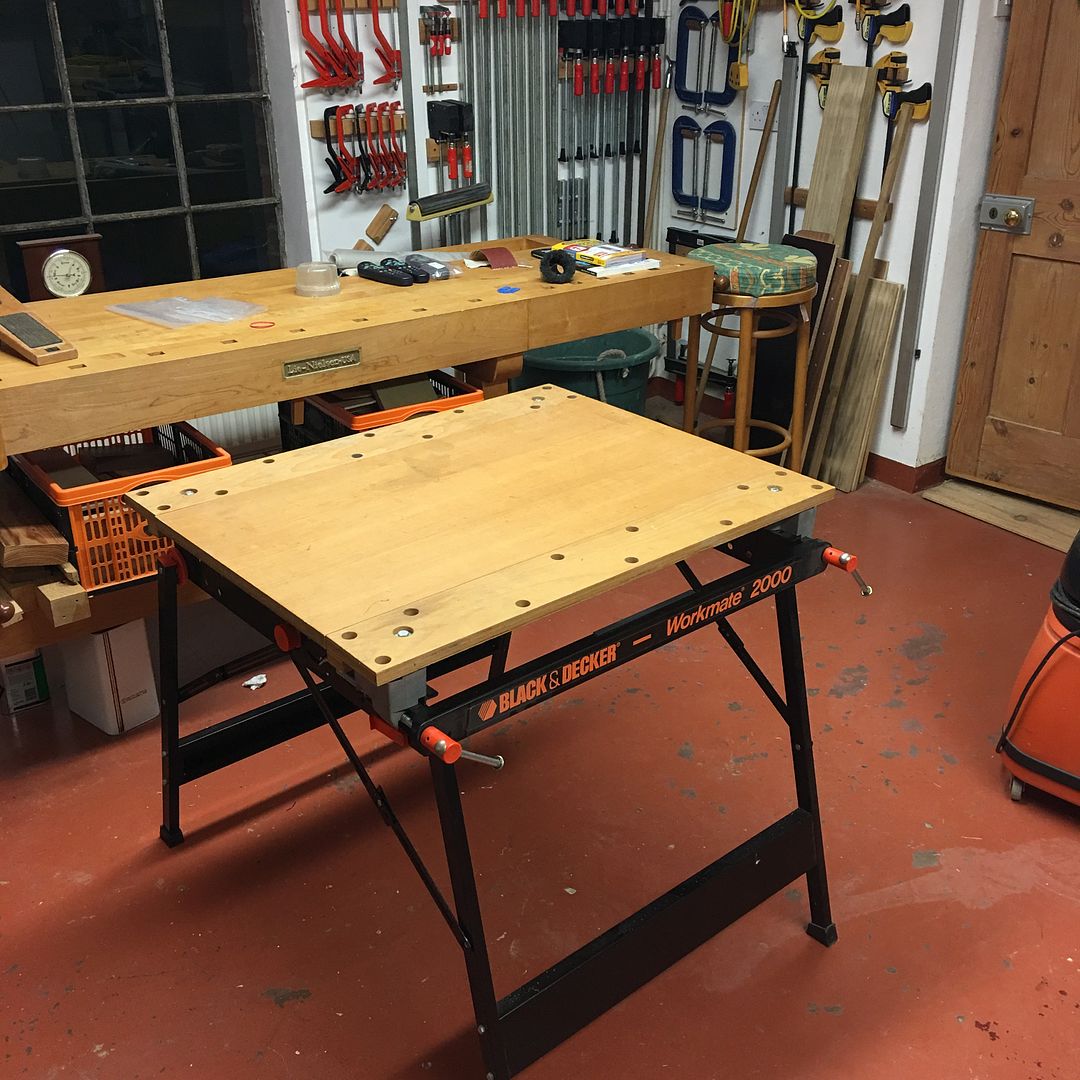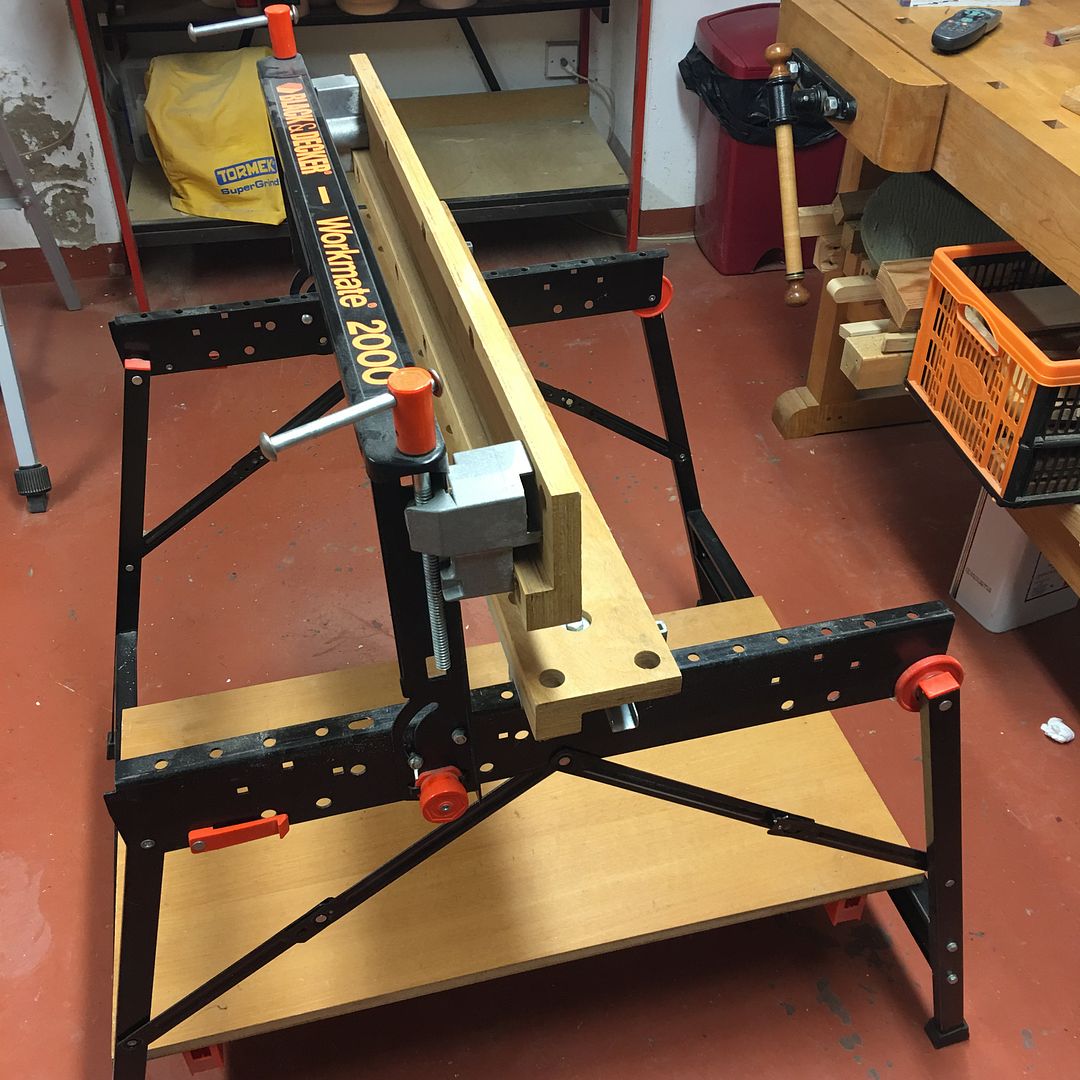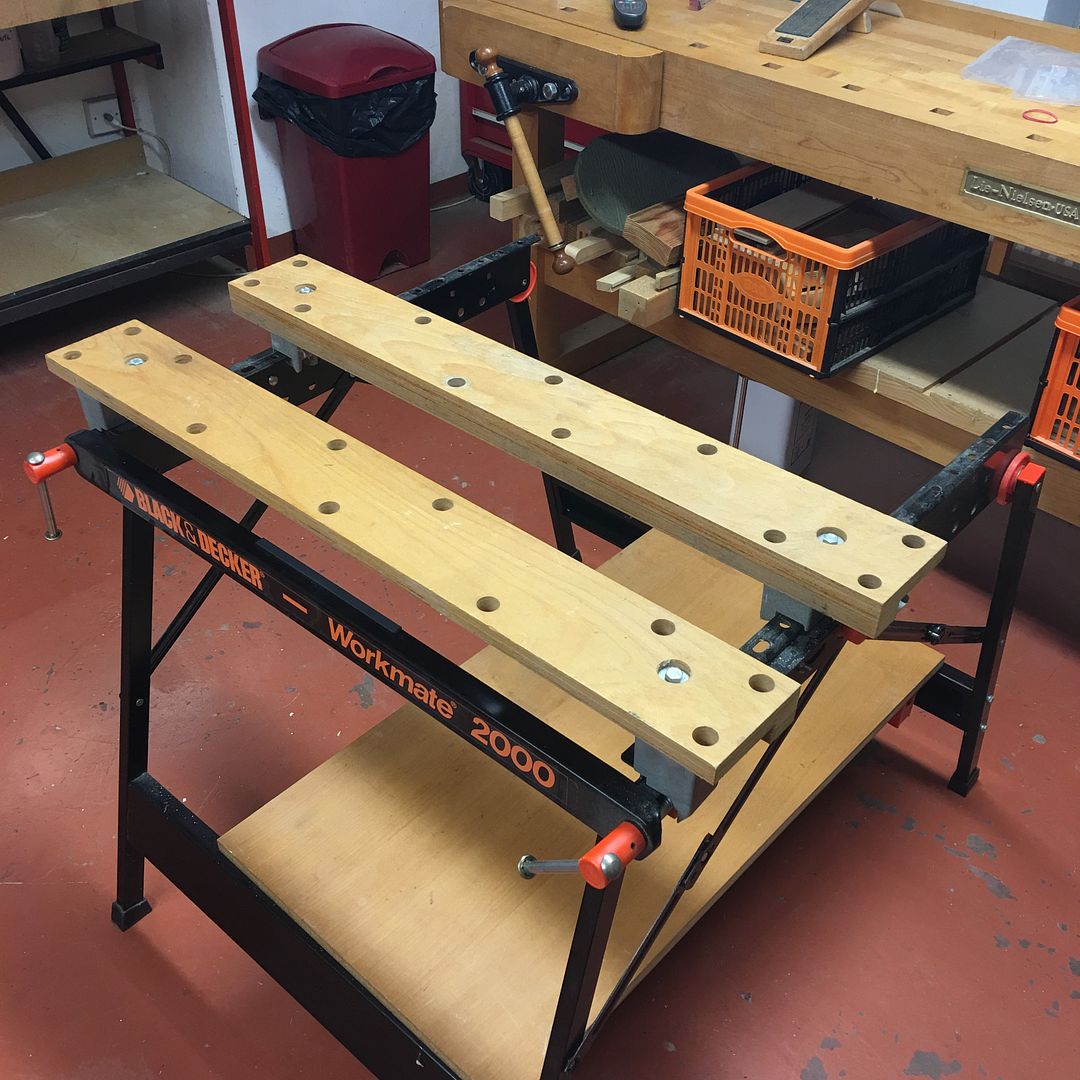sheldon":gb6mdfjk said:
Does anybody out there happen to remember the model number used for the first Dual Height Workmate produce under the B&D brandname - i.e. the one on which all the frame sections and legs were entirely alloy parts ? Indeed did these first ones have model numbers?
I'd quite like to replace on of the H-frames on mine if I came across a 'dead' one.
Regards
Hi
Just registered, and this is my first post on this forum. English not being my mother tongue, I must apologise beforehand for any glitches that you will undoubtedly find on my posts. And - sorry, I have atendency for writing long-ish posts...
I have owned a Workmate for some 40 years (still the same old one, pretty hard beaten, but still going strong). Now being retired, I manage to use it almost every day. There is no other way to work when you live in a flat - 7th floor no less - and have just 3 square meters available... I mostly use woodworking hand tools (noiseless unless you need to hammer something...), including hand planes. How does one do to plane with a Wormate? Well, just prop the thing against a big heavy cupboard. Plane a longer piece? Place a low bench as a "shim" between the WM and the cupboard. Etc... you must develop some inventiveness when you have no other means...
I already have had to make some repairs and refurbishing - the most difficult so far was bushing one of the threaded holes where the back aluminium frame is fastened to the base. I had to (slightly) enlarge the hole in the frame, then turn and thread a brass bushing, which I then epoxied into the enlarged hole. It has worked nice for about ten years so far.
I am in for a lot more work on it in a short time - eliminating all the play that developped on the slides along the years (I probably will use steel shims) and a big refurbishing of the tops. The real problem is - I need the WM for doing he work...

Got to get around that one...
You may ask - why bother with all the work and not buy a new, modern equivalent ? Well, I am sorry to say there is no modern equivalent! This is a # 625 type Eo5, made in Ireland in the early 70's, I would be loath to let it go, and I have no need for toys, which seem to be all they are producing nowadays - never mind the brand (unfortunately, this seems to be true of many manufacturers who cater for the amateur market - they just don't take amateurs seriously, so they sell them junk labeled as "amateur grade"; take Stanley since the 70's as just one example; Bosch seems to be going the same way...)
As for sheldon's question:
according to Landis (The Workbench Book), I believe the first models produced by B&D were designated mark II. I don't know if that designation evolved into something different, as B&D seems to have adopted a different designation for every small modification they made to the original design... On the mark II a substantial number of parts, including the base and the lower legs, seem to be aluminium castings (I have only seen photographs, not the real thing). It also had thicker tops than later models.
I believe there were several different nos., marks or types produced with steel bases and aluminium frames, the last one being the 625, which is the one I own (#626 already had a stamped all-steel frame). However, any one model seems to have included several different sub-types, differing only in small details (hence type 625 Eo5 on mine; I know there was a #625 type 6, as I found a parts list - albeit a short one - from a spare parts supplier). I tried to find some more informations about this specific model, but even B&D in England were not able (or at least so they told me; as far as I'm concerned they may as well simply not have bothered to search...) to find anything about the #625 in their files :shock:
Anyway, I attach some pictures of the one I own:







